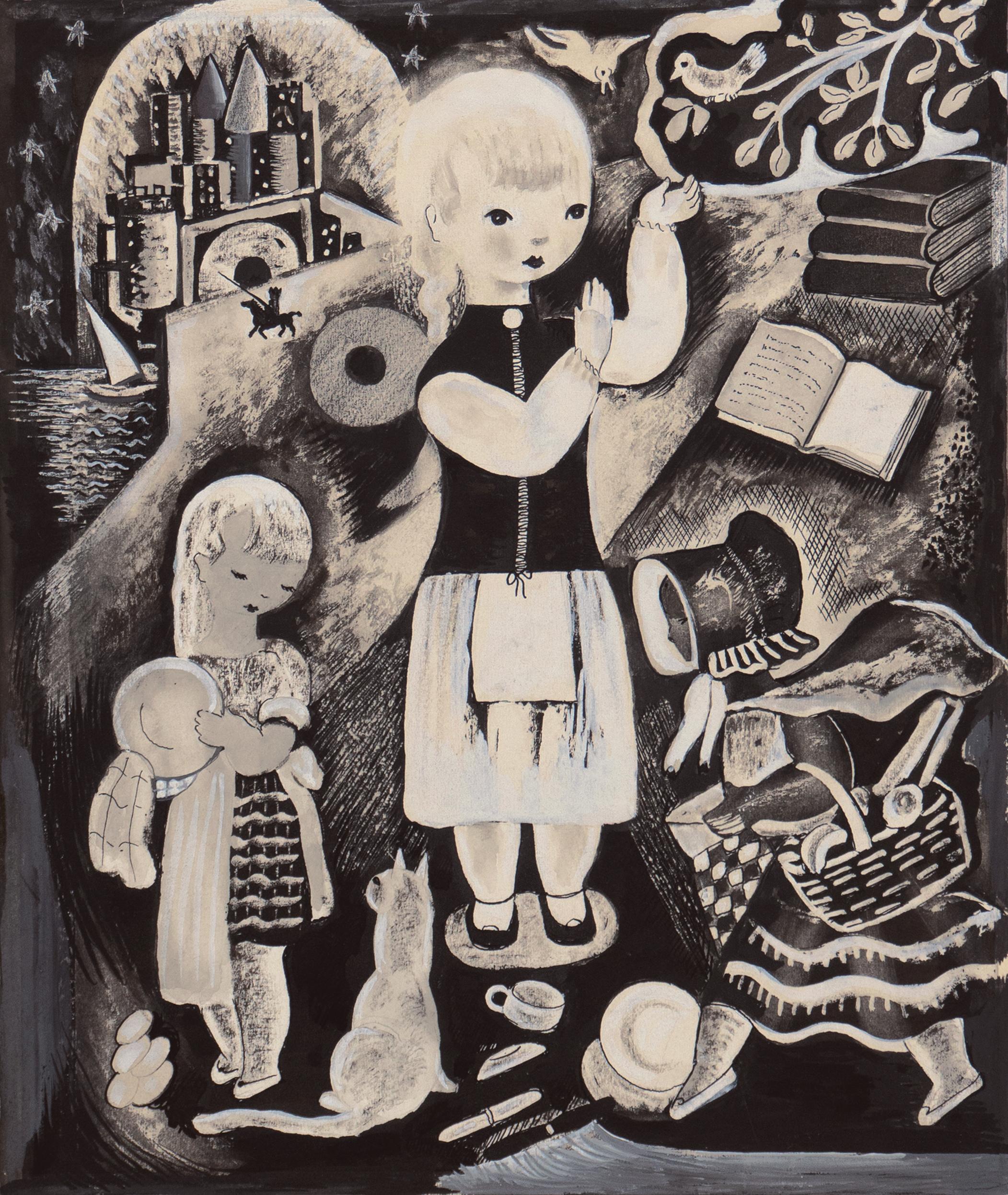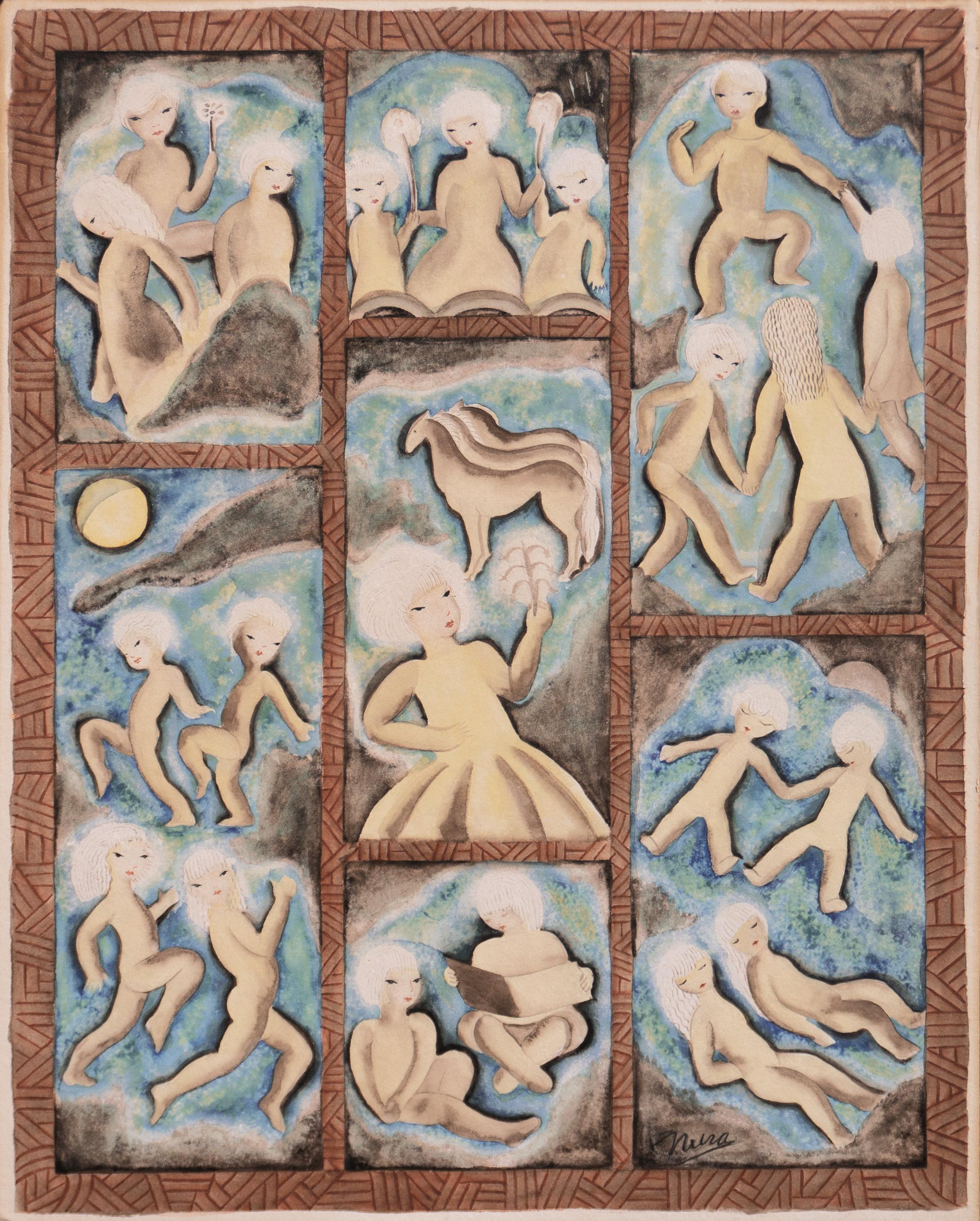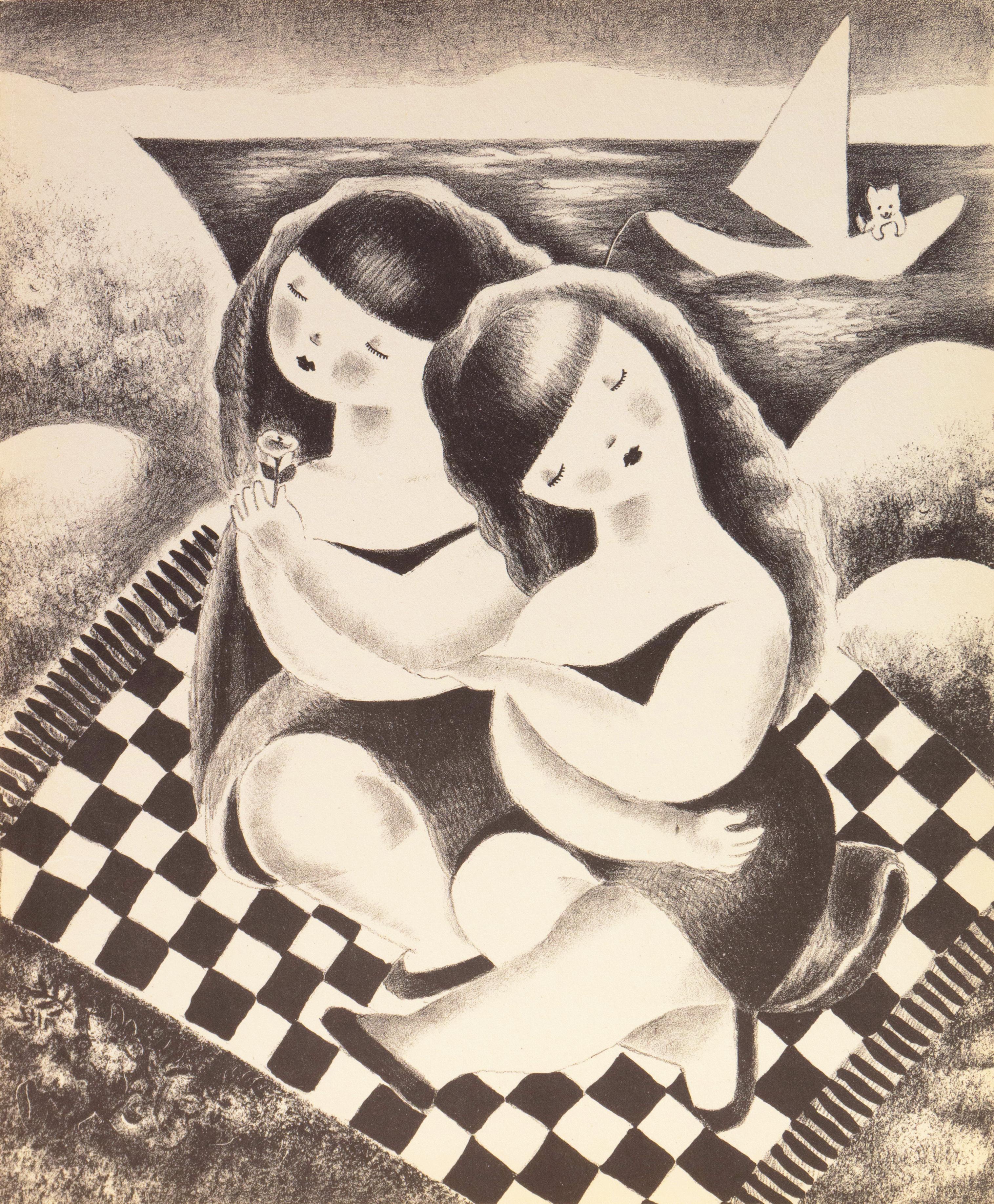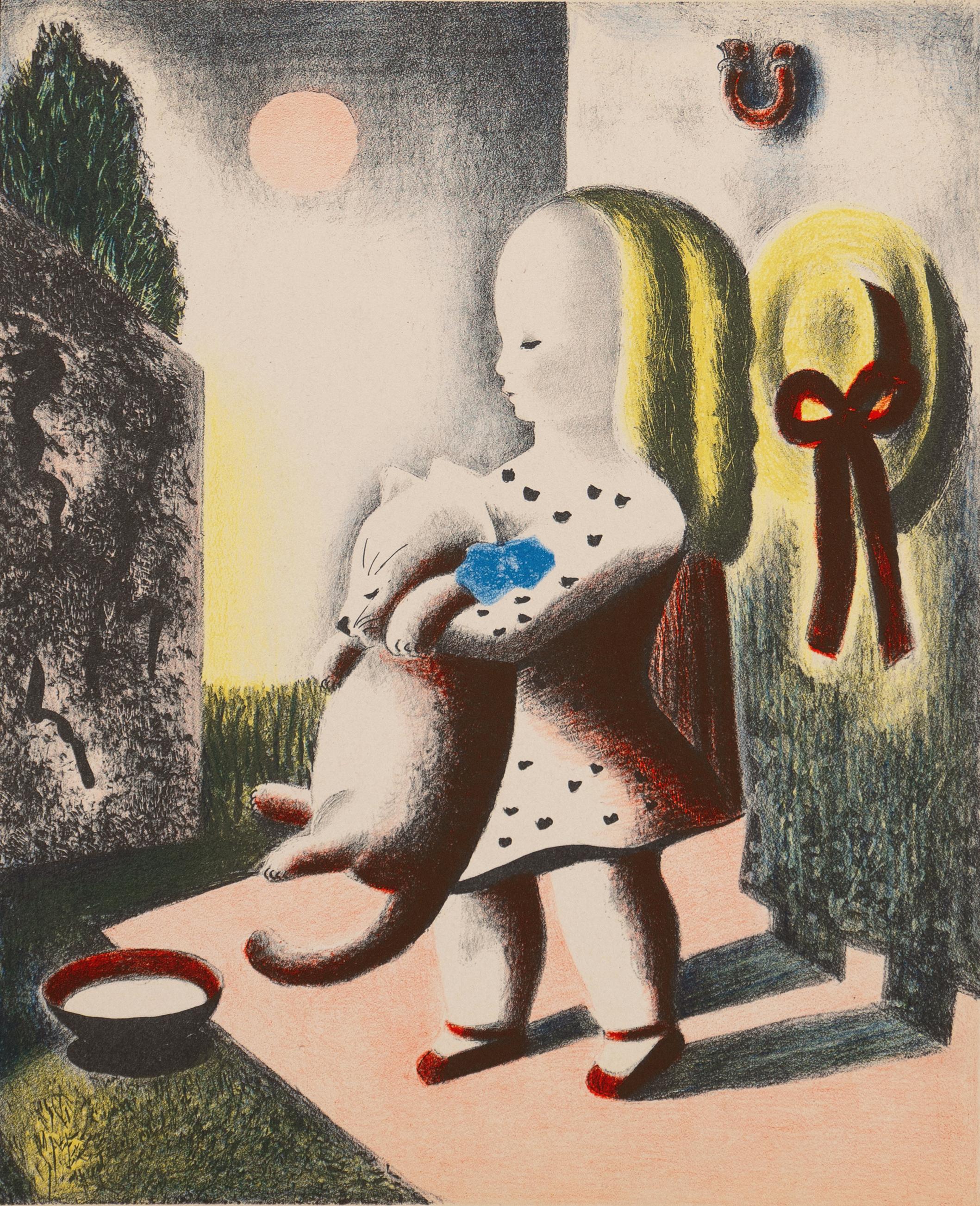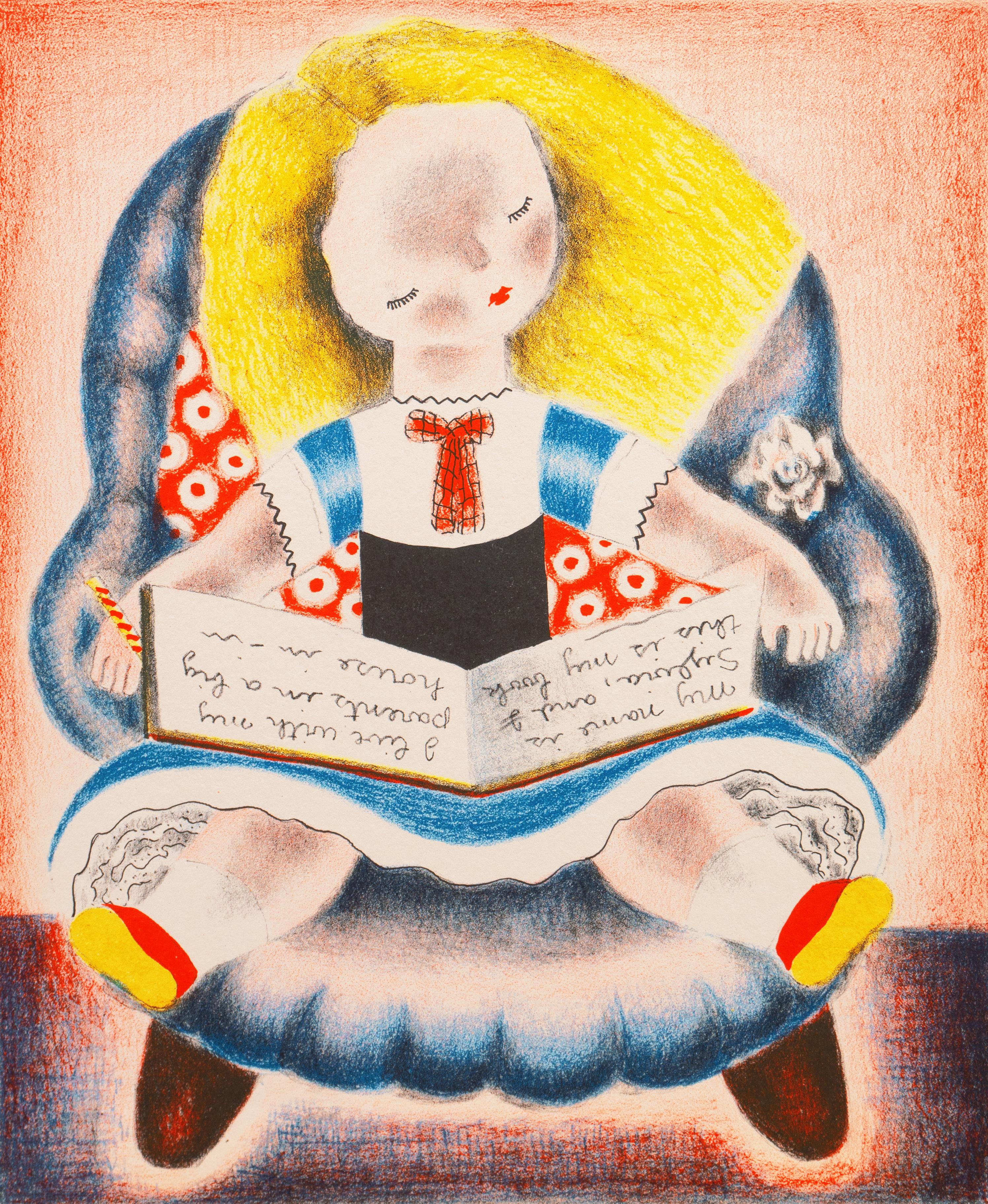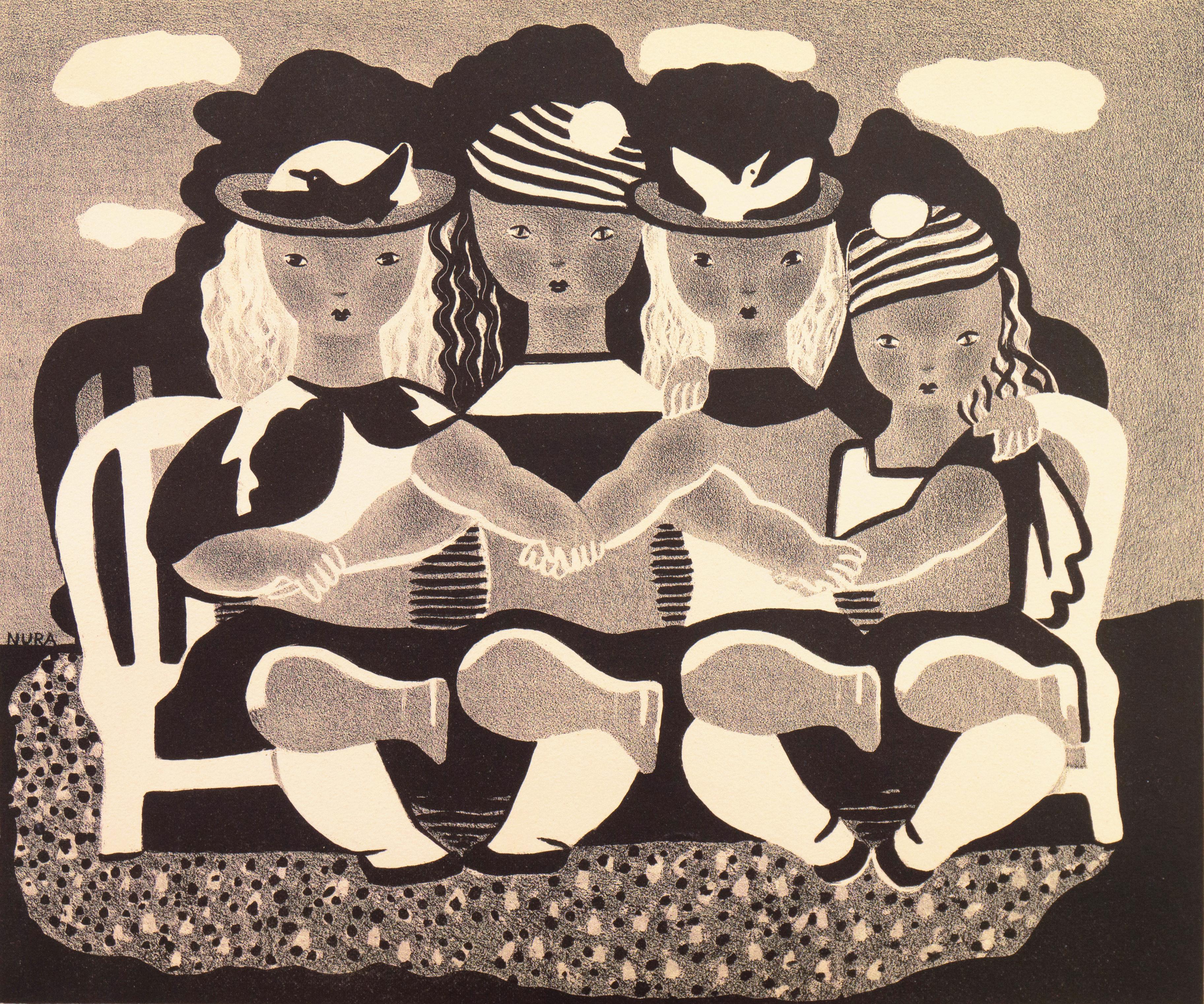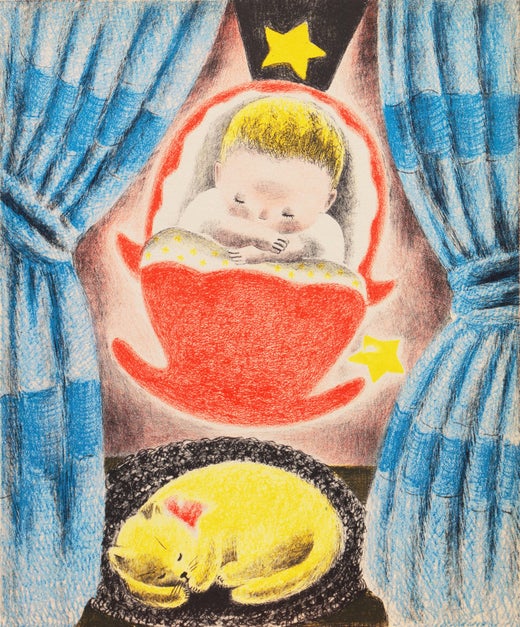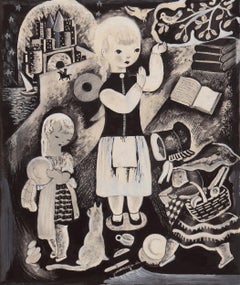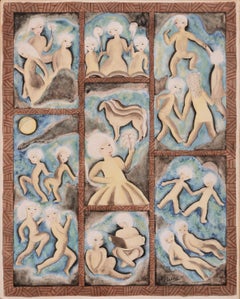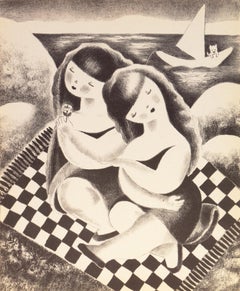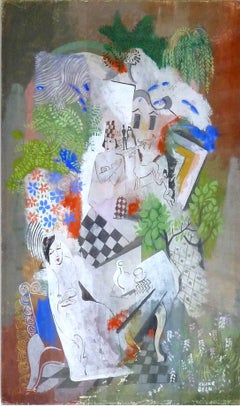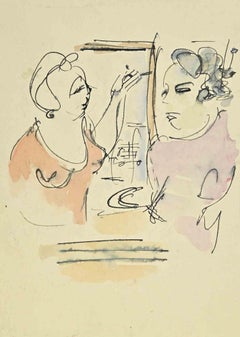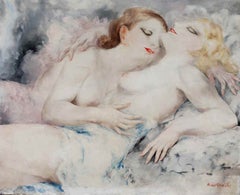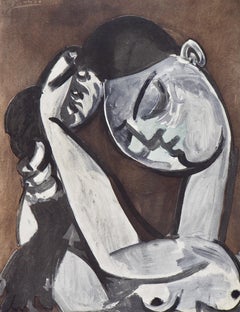Items Similar to 'After School', Art Deco, Woman Artist, AIC, ASL, Paris, Salon d'Automne, PAFA
Want more images or videos?
Request additional images or videos from the seller
1 of 14
Nura Ulreich'After School', Art Deco, Woman Artist, AIC, ASL, Paris, Salon d'Automne, PAFACirca 1935
Circa 1935
$4,225
$6,50035% Off
£3,225.77
£4,962.7235% Off
€3,727.35
€5,734.3835% Off
CA$5,931.10
CA$9,124.7735% Off
A$6,610.83
A$10,170.5135% Off
CHF 3,468.48
CHF 5,336.1235% Off
MX$80,729
MX$124,198.4635% Off
NOK 43,918.44
NOK 67,566.8335% Off
SEK 41,509.60
SEK 63,860.9335% Off
DKK 27,818.81
DKK 42,798.1735% Off
About the Item
Signed lower right, 'Nura' for Nura Woodson Ulreich (American, 1899-1950) and painted circa 1935.
This early twentieth-century painter, lithographer, muralist, author, poet and illustrator first studied at the Kansas City Art Institute before attending the Chicago Academy of Fine Arts. In Chicago, she met and married fellow student, the American artist Buk Ulreich. The couple then moved to New York where Nura studied at the Art Students League with John French Sloan and Frederic Gruger. In 1926, they moved to Paris where Nura held her first exhibition at the Théâtre des Champs-Élysées (1926). She subsequently exhibited widely and with success including with two entries accepted at the 1926 Salon d'Automne. The works from this early Paris period already show her preference for subjects that are firmly aligned with the dream-states of childhood and painted in what would become her characteristic, quasi-surreal, Art Deco style. It was during this first visit to France that she began to paint and exhibit under the brush name, 'Nura'.
After returning to the United States, Nura continued to exhibit widely, including at the Art Institute of Chicago, the Corcoran Galleries Biennials (1928-39), the Salons of America, the Society of Independent Artists (1928, 1941) and the Pennsylvania Academy of Fine Arts (1929-1931), among other national art institutions. Nura's work is held in numerous private and public collections including in the permanent collections of the Smithsonian Art Museum, the Walker Art Center, the San Diego Museum of Art, and the David Winton Bell Gallery at Brown University, among others.
Reference:
Who Was Who in American Art 1564-1975: 400 Years of Artists in America, Peter Hastings Falk, Sound View Press 1999, Vol. 3, p. 3366; Finding Nura; Rediscovering an American Modernist, Catalog of the Exhibition of Works from the Kendra and Allen Daniel Collection, Carle Museum, Amherst, Massachusetts; et al.
- Creator:Nura Ulreich (1899 - 1950, American)
- Creation Year:Circa 1935
- Dimensions:Height: 11 in (27.94 cm)Width: 15 in (38.1 cm)Depth: 0.25 in (6.35 mm)
- Medium:
- Movement & Style:
- Period:
- Condition:illustration board laid down on archival, 8-ply cotton rag board; toning, minor restoration; unframed; shows well.
- Gallery Location:Santa Cruz, CA
- Reference Number:1stDibs: LU34414793342
Nura Ulreich
Nora Woodson Ulreich was born in 1899 in Kansas City, Missouri, and was known professionally as “Nura.” She was a painter, printmaker, author, and illustrator, particularly of children’s books. Ulreich studied at the Kansas City Art Institute, the Chicago Academy of Fine Arts, and the Art Students League in New York. She also studied in Paris where she met her Hungarian-born husband, fellow artist Eduard Buk Ulreich, and first exhibited at the Théâtre des Champs Elysées in 1926. Her style was a studied but naïve form of modernism and she often portrayed seemingly innocent views of children and their pets. Nura was a strong believer in Christian Science and sometimes included spiritual motifs in her whimsical pieces with an Art Deco-inspired palette. Nura frequently collaborated with Edward and their combined works often use the moniker “Bukannura.” In 1927, their work was exhibited at the Dudensing Gallery on 57th Street in New York. Eduard was also a muralist who completed commissions for the Treasury Department’s Section of Fine Arts between 1937 and 1940. Both Nura and Eduard are listed in Who Was Who in American Art and all other standard references.
About the Seller
5.0
Platinum Seller
Premium sellers with a 4.7+ rating and 24-hour response times
Established in 1982
1stDibs seller since 2013
742 sales on 1stDibs
Typical response time: 1 hour
- ShippingRetrieving quote...Shipping from: Santa Cruz, CA
- Return Policy
Authenticity Guarantee
In the unlikely event there’s an issue with an item’s authenticity, contact us within 1 year for a full refund. DetailsMoney-Back Guarantee
If your item is not as described, is damaged in transit, or does not arrive, contact us within 7 days for a full refund. Details24-Hour Cancellation
You have a 24-hour grace period in which to reconsider your purchase, with no questions asked.Vetted Professional Sellers
Our world-class sellers must adhere to strict standards for service and quality, maintaining the integrity of our listings.Price-Match Guarantee
If you find that a seller listed the same item for a lower price elsewhere, we’ll match it.Trusted Global Delivery
Our best-in-class carrier network provides specialized shipping options worldwide, including custom delivery.More From This Seller
View All'Age 9', Art Deco, Woman Artist, AIC, ASL, Paris, Salon d'Automne, Corcoran
By Nura Ulreich
Located in Santa Cruz, CA
Painted by Nura Woodson Ulreich (American, 1899-1950) as a full-page illustration for the book 'The Buttermilk Tree', circa 1935. A rare example of a fully-developed pen, ink and gou...
Category
1930s Art Deco Figurative Drawings and Watercolors
Materials
Gouache, Illustration Board, Pen, Pencil
'Childhood', Paris, Salon d'Automne, New York, ASL, Corcoran, PAFA, Art Deco
By Nura Ulreich
Located in Santa Cruz, CA
Signed lower right 'Nura' for Nura Woodson Ulreich (American, 1899–1950). Titled, verso, 'Childhood', signed with artist's Paris address and dated 1926.
This early twentieth-century...
Category
1920s Surrealist Figurative Drawings and Watercolors
Materials
Illustration Board, Watercolor, Gouache
$3,120 Sale Price
35% Off
'Mimi and Bemi', Art Student's League, Salon d'Automne, Paris, Art Deco, Surreal
By Nura Ulreich
Located in Santa Cruz, CA
A mid-century, stone lithograph titled 'Mimi and Bemi' by Nura Woodson Ulreich (American, 1899-1950), created in 1943 and with certification of authenticity stamped verso. Accompanie...
Category
1940s Surrealist Figurative Prints
Materials
Paper, Lithograph
'Anabel & Millicent', Art Deco, Woman Artist, AIC, ASL, Paris, Salon d'Automne
By Nura Ulreich
Located in Santa Cruz, CA
A mid-century, stone lithograph titled 'Anabel & Millicent' by Nura Woodson Ulreich (American, 1899-1950), created in 1943 and with certification of authenticity stamped verso. Accom...
Category
1930s Surrealist Figurative Prints
Materials
Paper, Lithograph
'Sylvia', Woman Artist, Art Student's League, Salon D'Automne, Art Deco, Paris
By Nura Ulreich
Located in Santa Cruz, CA
A mid-century, stone lithograph titled 'Sylvia' by Nura Woodson Ulreich (American, 1899-1950), created in 1943 and with certification of authenticity stam...
Category
1940s Art Deco Figurative Prints
Materials
Paper, Lithograph
'Sisters', Paris, Salon d'Automne, New York, Art Deco, AIC, ASL, Woman Artist
By Nura Ulreich
Located in Santa Cruz, CA
Signed center left, 'Nura' for Nura Woodson Ulreich (American, 1899–1950) and created circa 1935; additionally stamped, verso, with certification of authenticity.
An early twentieth...
Category
1930s Art Deco Figurative Prints
Materials
Paper, Lithograph
You May Also Like
Fantasy
By Bela Kadar
Located in London, GB
BELA KADAR 1877-1956
Budapest 1877-1956 (Hungarian)
Title: Fantasy, circa 1940
Technique: Original Hand Signed Gouache on paper
size: 46.2 x 29.4 cm / 18.2 x 11.6 in
Additional Information: This work is a guache painting by the famous Hungarian artist Bela Kadar.
It is hand signed in pencil "Kadar Bela" in the lower right corner of the paper.
Exhibitions:
New York, Shepherd & Derom Galleries, Hungarian Modernism, 29 April-2 July 2010, no.12.
Tel Aviv, Galerie le Minotaure...
Category
1940s Cubist Figurative Drawings and Watercolors
Materials
Gouache
$27,500
Women - Drawing - Mid-20th Century
Located in Roma, IT
Women is a drawing realized in the Mid-20th Century.
Ink and watercolor on Paper.
Good conditions with slight foxing.
The artwork is realized through deft expressive strokes.
Category
Mid-20th Century Modern Figurative Drawings and Watercolors
Materials
Ink, Watercolor
Les Amies
By Micao Kono
Located in West Hollywood, CA
Micao Kono was born in Japan, moving to work in Paris in the 1920's. His style, a mixture of Japanese watercolor and figurative Art Deco. He often mixed egg tempera into his oils to ...
Category
1920s Art Deco Figurative Paintings
Materials
Canvas, Oil
Price Upon Request
Picasso, Femme se coiffant, Société internationale d'art XXe siècle (after)
By Pablo Picasso
Located in Southampton, NY
Lithograph, stencil on vélin paper. Paper Size: 12.4 x 9.65 inches. Inscription: Signed in the plate and unnumbered, as issued. Notes: From the album, XXe siècle, Nouvelle série N° 7...
Category
1950s Cubist Figurative Prints
Materials
Lithograph
$3,196 Sale Price
20% Off
Composition
By Manuel Mendive
Located in Miami, FL
Manuel Mendive
Composition, 1991
Mixed media on paper
22 x 29 in
Provenance:
Ceres Franco Collection, Paris, France
Included Certificate of authenticity by the artist
Category
1990s Contemporary Figurative Drawings and Watercolors
Materials
Watercolor
Girls. Figurative limited edition etching, Surrealist, Nude, Polish art
By Leszek Rózga
Located in Warsaw, PL
Figurative surreal etching print with watercolor by Polish artist Leszek Rozga. Artwork depicts several portraits in different styles. Artwork is signed by the artist, it comes from ...
Category
2010s Contemporary Figurative Prints
Materials
Paper, Watercolor, Etching
